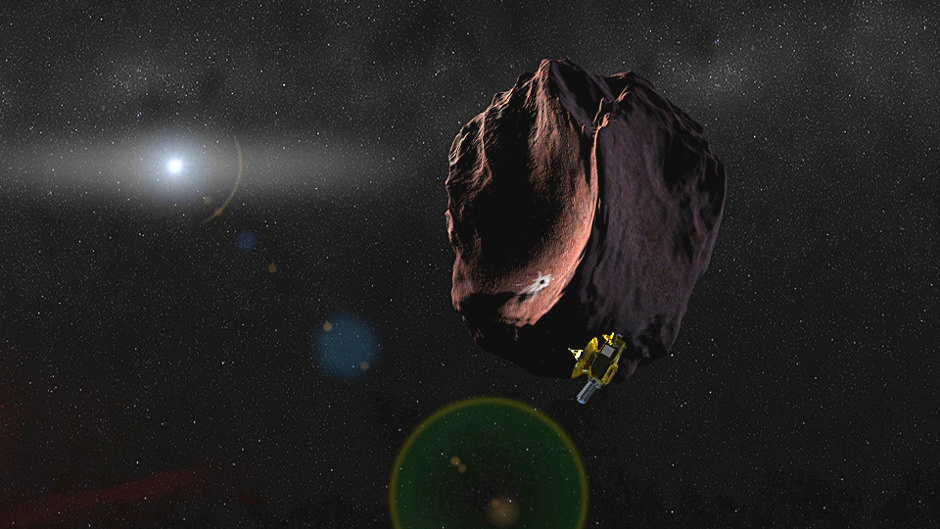
After having completed its successful encounter with Pluto and its moons last July, the New Horizons spacecraft is now setting its sights on its next target much farther out in the Kuiper Belt: a tiny rocky world called 2014 MU69, which is less than 30 miles in diameter and orbits nearly 1 billion miles past Pluto, in the far outer reaches of the Solar System.
According to a report today by the Associated Press, New Horizons fired its thrusters for the first in a series of course-correction changes this afternoon. Four such maneuvers will be needed altogether over the next two weeks. Flight controllers at the Johns Hopkins University Applied Physics Laboratory in Laurel, Md., sent commands to the spacecraft in advance for the course change.
“Even as the New Horizon’s spacecraft speeds away from Pluto out into the Kuiper Belt, and the data from the exciting encounter with this new world is being streamed back to Earth, we are looking outward to the next destination for this intrepid explorer,” said John Grunsfeld, chief of the NASA Science Mission Directorate in Washington. “While discussions whether to approve this extended mission will take place in the larger context of the planetary science portfolio, we expect it to be much less expensive than the prime mission while still providing new and exciting science.”
2014 MU69, also known as Potential Target 1 (PT1), was first spotted by the Hubble Space Telescope in 2014 and was chosen from a group of candidates as being the best target since it will take less fuel to get there. Five initial possible targets were narrowed down to two, and then finally to one. While much smaller than Pluto, about 1 percent the size and one-ten-thousandth the mass, it is thought to be 10 times larger and 1,000 times more massive than an average comet. The mission team hopes to get closer than the distance that the spacecraft came to during the flyby of Pluto.
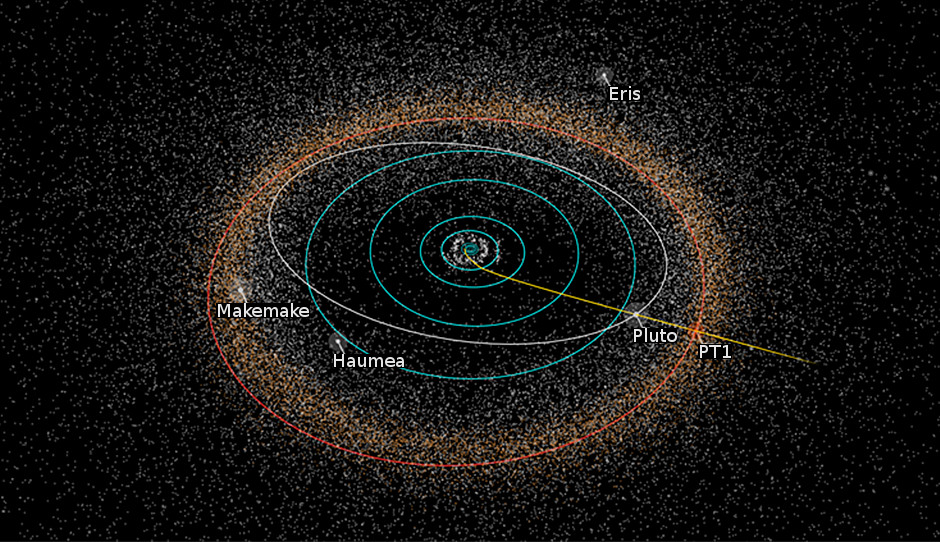
2014 MU69 represents the kind of rocky objects left over from the early formation of the Solar System. They are similar to main belt asteroids but are colder and better preserved, remaining virtually unchanged over billions of years. This provides scientists with a unique opportunity to study such ancient, primordial relics of our Solar System’s birth. It was recommended by the 2003 National Academy of Sciences’ Planetary Decadal Survey (“New Frontiers in the Solar System”) that this first mission to the Kuiper Belt should include flybys of both Pluto and other KBOs in order to maximize the science return.
According to New Horizons Principal Investigator Alan Stern: “2014 MU69 is a great choice because it is just the kind of ancient KBO, formed where it orbits now, that the Decadal Survey desired us to fly by. Moreover, this KBO costs less fuel to reach (than other candidate targets), leaving more fuel for the flyby, for ancillary science, and greater fuel reserves to protect against the unforeseen.”
New Horizons is scheduled to arrive at 2014 MU69 on Jan. 1, 2019. If successful, the rocky object will then be the furthest world ever seen up close in our Solar System.
From the beginning, New Horizons was designed to be able to explore additional objects in the Kuiper Belt, carrying extra hydrazine fuel for that mission. Its power and communications systems can also continue to work far beyond Pluto.
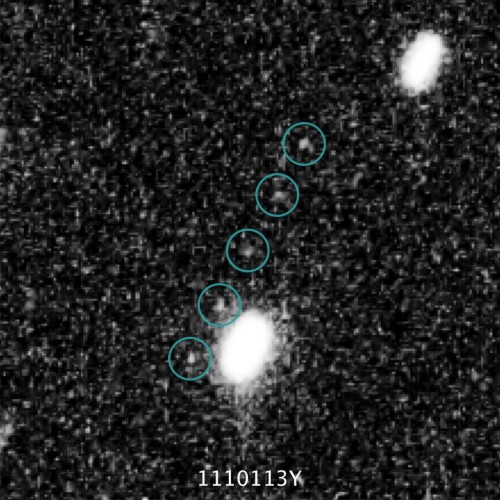
“Although this flyby probably won’t be as dramatic as the exploration of Pluto we just completed,” according to Stern, “it will be a record-setter for the most distant exploration of an object ever made.”
“There’s so much that we can learn from close-up spacecraft observations that we’ll never learn from Earth, as the Pluto flyby demonstrated so spectacularly,” said New Horizons science team member John Spencer, of the Southwest Research Institute (SwRI) in Boulder, Colo. “The detailed images and other data that New Horizons could obtain from a KBO flyby will revolutionize our understanding of the Kuiper Belt and KBOs.”
The Kuiper Belt was named after Gerard Kuiper, who first theorized its existence. Over 1,000 KBOs have been identified so far, including Pluto, but many more are also expected to be discovered.
New Horizons has sent back an incredible amount of data from the Pluto system, including stunning images and science discoveries which will revolutionize our understanding of this small world. As reported previously on AmericaSpace, the first science results have now been published in the journal Science and were the cover story for the Oct. 16, 2015 issue.
The first images of Pluto’s tiny moon Kerberos were also just released today, completing the “family portrait” of Pluto’s five known moons. Kerberos appears to be smaller and more reflective than scientists had expected.
“Once again, the Pluto system has surprised us,” said New Horizons Project Scientist Hal Weaver, of the Johns Hopkins University Applied Physics Laboratory in Laurel, Md. “Our predictions were nearly spot-on for the other small moons, but not for Kerberos,” added New Horizons co-investigator Mark Showalter, of the SETI Institute in Mountain View, Calif.
The moon has a double-lobed shape, with the larger lobe approximately 5 miles (8 kilometers) across and the smaller lobe approximately 3 miles (5 kilometers) across. The reflectivity suggests that Kerberos is coated with water ice, similar to the other small Plutonian moons.
The first 3-D images of Pluto’s surface have also now been released; the images now make global stereo mapping of Pluto’s surface possible, and require red/blue stereo glasses to view.
Once thought to be a relatively inactive world, being so bitterly cold and far from the Sun, Pluto has been shown to be more geologically active than anticipated, with mountains of solid water ice, canyons, unusual pits, and large, slowly moving glaciers of nitrogen, methane, and carbon monoxide ices. The thin nitrogen atmosphere also glows blue when seen backlit by the Sun, not too different from what we see on Earth.
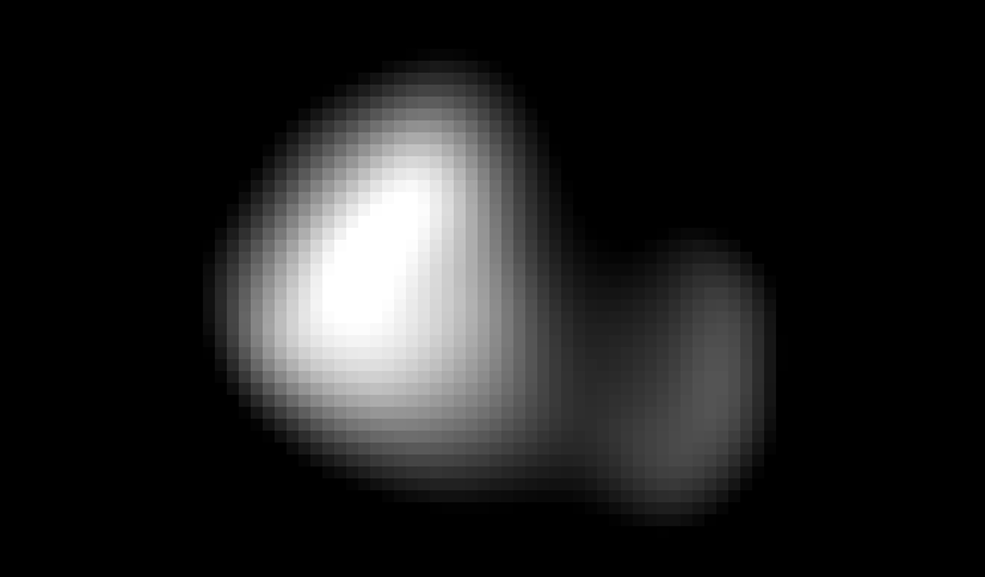
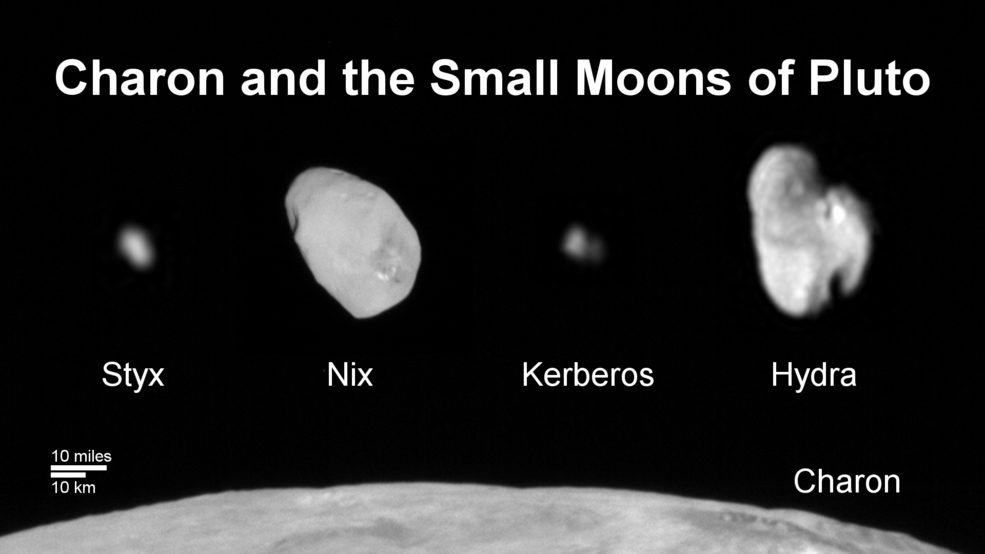
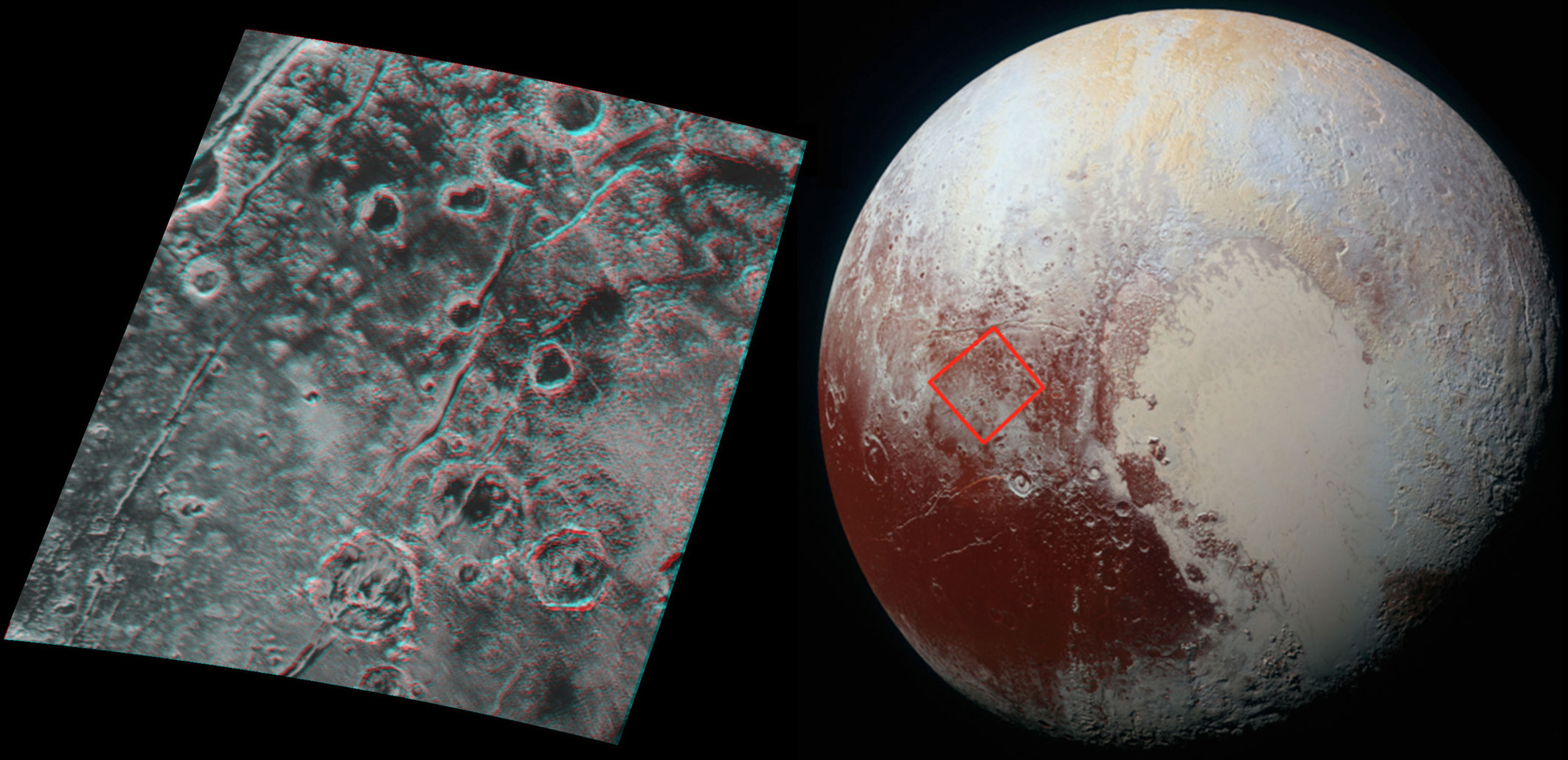
“The New Horizons mission completes our initial reconnaissance of the Solar System, giving humanity our first look at this fascinating world and its system of moons,” said Jim Green, director of planetary science at NASA Headquarters in Washington. “New Horizons is not only writing the textbook on the Pluto system, it’s serving to inspire current and future generations to keep exploring – to keep searching for what’s beyond the next hill.”
New Horizons is currently 3.1 billion miles (5 billion kilometers) from Earth. Data from the flyby will continue to be sent back to Earth for about another year.
New Horizons is part of NASA’s New Frontiers Program, managed by the agency’s Marshall Space Flight Center in Huntsville, Ala. The Johns Hopkins University Applied Physics Laboratory, Laurel, Md., designed, built, and operates the New Horizons spacecraft and manages the mission for NASA’s Science Mission Directorate. SwRI leads the science mission, payload operations, and encounter science planning.
Follow our New Horizons mission page for regular updates.
Be sure to “Like” AmericaSpace on Facebook and follow us on Twitter: @AmericaSpace
.
Missions » New Horizons »



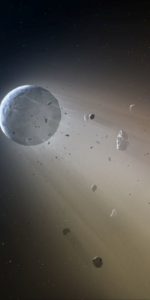

Thank you Paul Scott Anderson for the interesting article!
And the New Horizons spacecraft’s flight by 2014 MU69 on January 1, 2019 should also be an eye opener!
The diverse resource, science, and cultural opportunities offered by the many worlds of our Solar System should keep us quite busy for several centuries.
Thanks, look forward to the close up views of Pt1 when the time comes!
This is perhaps a bit “nit picking”, especially as the NASA releases say the same – but just to say, Earth’s atmosphere wouldn’t look blue when seen from the other side from the sun. It would look red. This is what turns the moon red during eclipse. So the blue of the Pluto atmosphere seen from the far side from the sun with the sun blocked by Pluto basically means it has blue sunsets and sunrises like Mars. Presumably Charon would turn blue during an eclipse by Pluto.
It looks great though :).